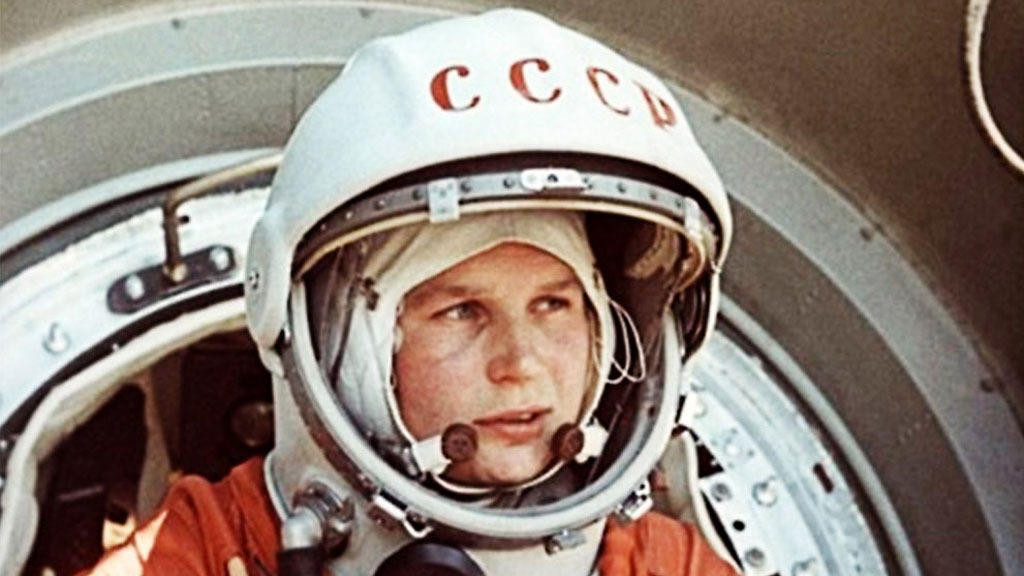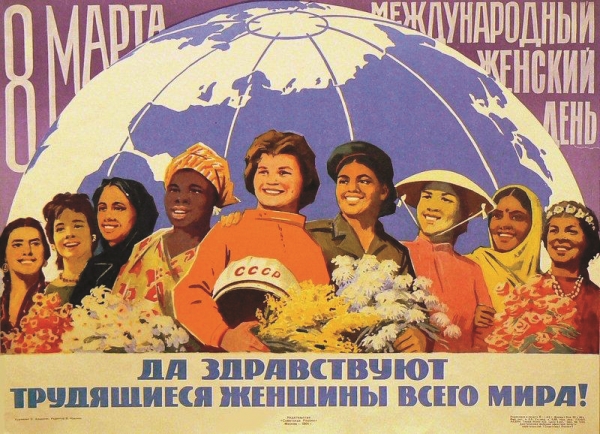To mark International Women’s Day, Curator Doug Millard explores the extraordinary life of Valentina Tereshkova.

In April 1961 when news of Yuri Gagarin’s pioneering spaceflight as the first human ever to go into space was coming over the radio Elena Fyodorovna turned to her daughter and said, “They’ve sent a lad up, now it’s a lass’s turn to go.”
Two years later a neighbour invited Elena to come round and watch the latest pictures from space on the television. They were grainy and blurred but there was no mistaking the face of Elena’s daughter on the screen: her name was Valentina Tereshkova. Her mother was shocked; she had known nothing of the secret work Valentina had been engaged in the previous year – training to be a cosmonaut. Now Valentina had become the first woman ever to leave the planet and fly into space.
Valentina had been inspired deeply by Gagarin’s mission and wondered whether she might too one day fly into space. She loved adventure and was an accomplished parachutist, and later that summer she sat down and wrote to the authorities asking to become a cosmonaut. She waited and waited for a reply.
Meanwhile, the United States’ Mercury astronaut programme was underway: Alan Shepard became the first American in space just a few weeks after Gagarin, and Gus Grissom followed in July 1961. Tom Wolfe would later refer to the seven Mercury astronauts as possessing the ‘Right Stuff’ – that blend of talent and courage that set them aside from ordinary mortals. The Mercury 7’s image was one of overt maleness; it seemed unlikely any woman would fly into space any time soon. Indeed, a group of 13 women who wished to be considered by NASA were turned down by the agency as none had been through military air training schools, despite their being accomplished civilian pilots.

Back in the USSR, and well aware of the American interest in female astronauts, the head of the cosmonaut training programme Nikolai Kaminin was including women in the next batch of cosmonaut trainees: “We cannot allow that the first woman in space will be American.” Spotters were sent incognito to aviation clubs around the USSR seeking suitable candidates for the new but secret programme. Valentina was one of 400 women who were long-listed for further tests and by the beginning of April 1962 this list had been whittled down to just five.
Why was Valentina chosen finally ahead of her colleagues? Her parachuting counted for much – all early cosmonauts had to bail out of their spacecraft before landing back on Earth, and she responded well to the barrage of tests the candidates were subjected to.
It was her personality and background that counted greatly too. Her family had overcome loss and deprivation, her father was killed in the Soviet-Finnish war of 1940 and her mother raised three children on her own. She had character and she mixed well – throwing herself into team and group pursuits. She was a grafting textile worker, took a correspondence course in cotton weaving and became an active member of the Communist party’s local youth league.
Valentina Tereshkova was launched into space 16 June 1963. She spent almost three days orbiting Earth, spending more time in space than all of the Mercury 7 combined. It would be twenty years before the first American woman (Sally Ride) was launched into space.

Tereshkova certainly showed women too are made of the Right Stuff, or in Russian “то, что надо”.